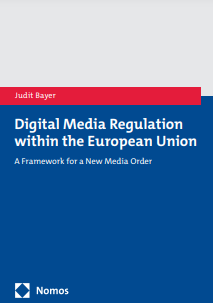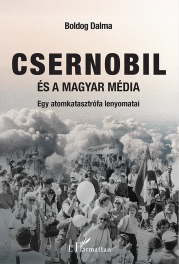Contents – Spring 2023
Kiss, Ágnes:
Kiss, Ágnes:
Coordination and control in the Soviet-type censorship systems
The censorship of the state-socialist regimes was based on vaguely formulated rules whose interpretation depended on the permanently changing ‘political line’ of the Communist Party. Through some examples of the Romanian censorship system, this study looks into fine-tuned organizational mechanisms, personal relationships and everyday practices that helped the clarification of the censorship rules and their coherent application, i.e., the formal and informal coordination and control mechanisms leading to an efficient functioning of the Soviet-type censorship system.
Keywords: control, coordination, effectiveness, formal mechanisms, informal mechanisms, Soviet-type censorship
Coordination and control in the Soviet-type censorship systems
Médiakutató Spring 2023 pp. 7-18 https://doi.org/10.55395/MK.2023.1.1
Bátorfy, Attila – Bárdos, Kata Kincső:
Bátorfy, Attila – Bárdos, Kata Kincső:
Digital security awareness and device use among Hungarian journalists – research findings
Our online questionnaire and focus group research looked into the knowledge of Hungarian journalists and of newsrooms about digital security and digital safety. Our findings suggest that Hungarian journalists are little informed about digital security; some form of online harassment is the most frequent; 43 per cent of respondents do not use any tools for digital protection; and journalists are mainly not concerned about their own safety, but that of their sources, investigations and family; and most of them consider online harassment and attacks natural parts of their work.
Keywords: digital safety, harassment, journalism, security, surveillance
Digital security awareness and device use among Hungarian journalists – research findings
Médiakutató Spring 2023 pp. 21-37 https://doi.org/10.55395/MK.2023.1.2
Völgyi, Réka:
Völgyi, Réka:
Budapest’s most beautiful concubine and Zsuzsa the Red: prostitute murders in the tabloid press
Research on women’s history, following international trends, has come to the fore in Hungary in the past decades. Analyses of the history of prostitution, however, have only been conducted in recent times. As early as the 1980s, historical studies in the West discovered the importance of the topic, identified its actors, and determined the focus of research. Prominent social historians have undertaken the study of prostitution, including Alain Corbin and Judith R. Walkowitz. Studies have also been published in Hungary, yet a thorough and comprehensive social history monograph is still pending. However, based on the research available, one can form a rough idea of how the press handled the problem of prostitution and how it explored some of the most dramatic cases. This paper does not offer a comprehensive history of prostitution but presents the case of two women murdered in Budapest in 1925 and 1926, including a mistress called Amália Leirer and the hatter-turned-prostitute Zsuzsanna Roscher. Both crimes aroused the interest of the tabloid press, and the journalists reported on what happened in great detail, or rather, the murder cases provided an opportunity for the press to maintain and preserve the attention of the contemporary audiences for weeks or even months.
Keywords: history of crime, history of the press, prostitution, sensation, tabloids
Budapest’s most beautiful concubine and Zsuzsa the Red: prostitute murders in the tabloid press
Médiakutató Spring 2023 pp. 41-53 https://doi.org/10.55395/MK.2023.1.3
Nagy, Adrienn:
Nagy, Adrienn:
“Smugglers’ raid across half the country”
From the outbreak of World War I, some of the population along the Austro-Hungarian border engaged in smuggling for nearly a decade, which seriously affected state and economic interests, but at the same time provided a secure living in the long term and on an individual level. The black marketeers sought to leave few traces behind. There are primary sources for researching the topic such as the documents issued by the contemporary governmental and municipal authorities, the police, the sheriff, and the boarder guard, as well as fragments of information from memoirs and literary works. At the same time, it is also important to examine the basic mechanisms and characteristics of smuggling and the background of social activity from the perspective of the contemporary media, especially the press and film reports. After all, those ‘smuggling reports’ that reached the media’s threshold of attention and became publicly known have greatly shaped the public mood and focused attention on black marketeering. This paper, based on two media sources, is to present the profitmaking businesses of local smuggling operations that involved several actors and were based on mutual trust.
Keywords: Austrian-Hungarian border, Az Est, film report, Pesti Napló, smuggling
“Smugglers’ raid across half the country”
Médiakutató Spring 2023 pp. 55-67 https://doi.org/10.55395/MK.2023.1.4
Szerényi, Szabolcs:
Szerényi, Szabolcs:
The complex relationship between art and advertising and their inherent research possibilities
This study is to present, to illustrate with examples, and to visually represent the close and complex relationship between art and advertising. It also attempts to organize the most important dimensions of the relationship between art and advertising and to present the main marketing communication goals and effects of using art in advertisements. Finally, it outlines some recommendations for future research.
Keywords: advertising, art, marketing, marketing communication, media, culture
The complex relationship between art and advertising and their inherent research possibilities
Médiakutató Spring 2023 pp. 71-83 https://doi.org/10.55395/MK.2023.1.5




